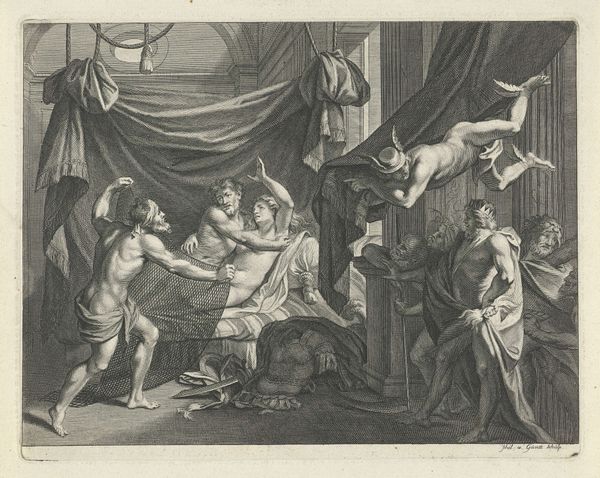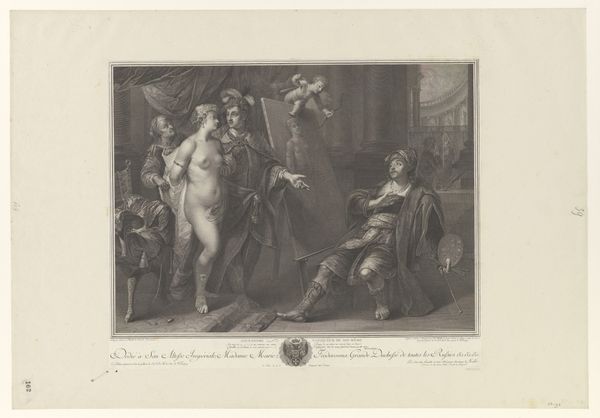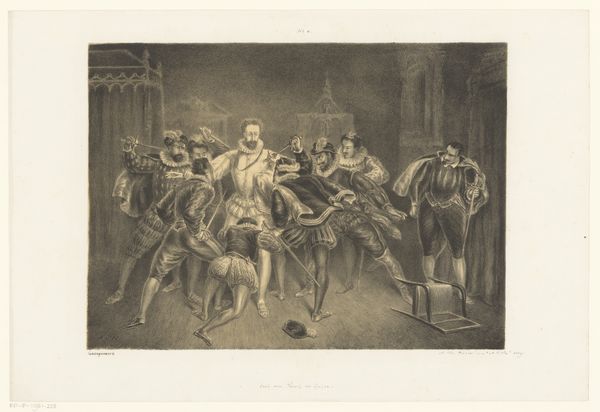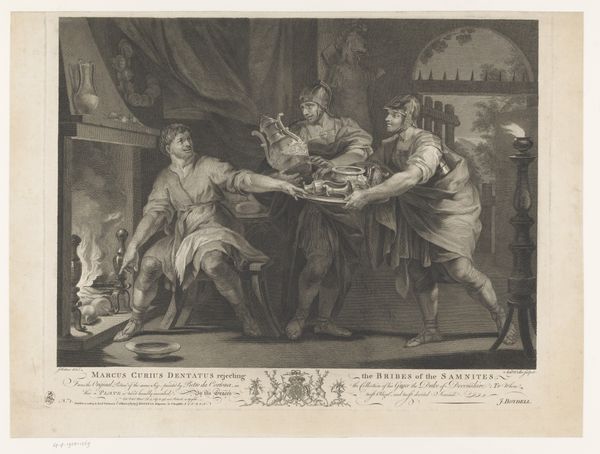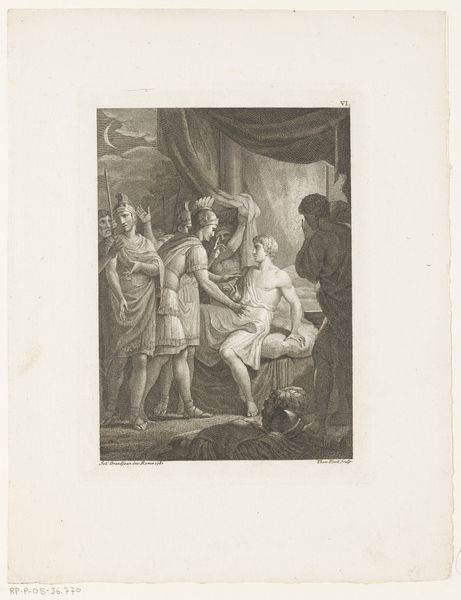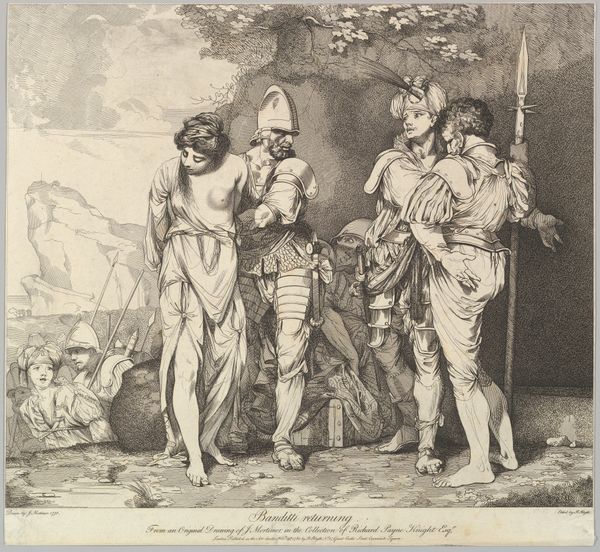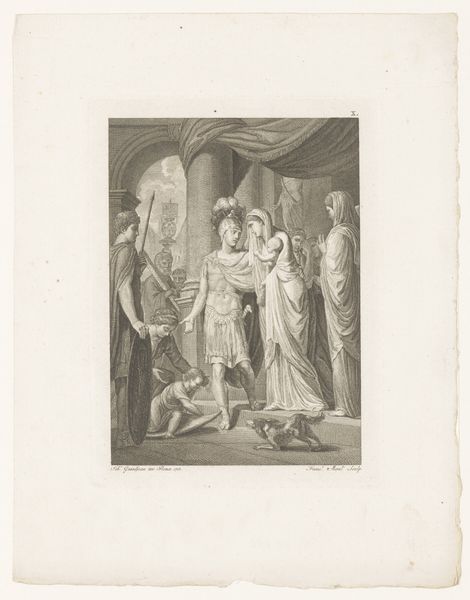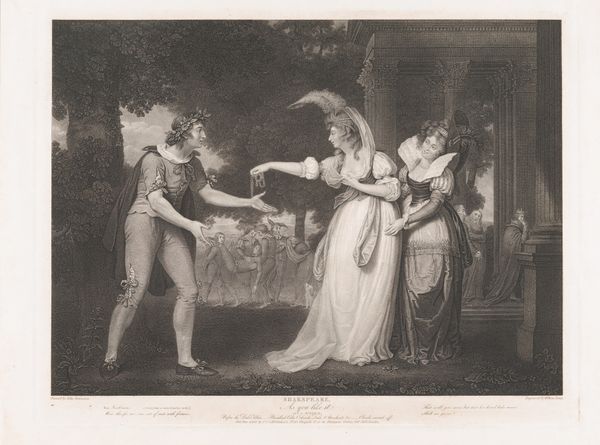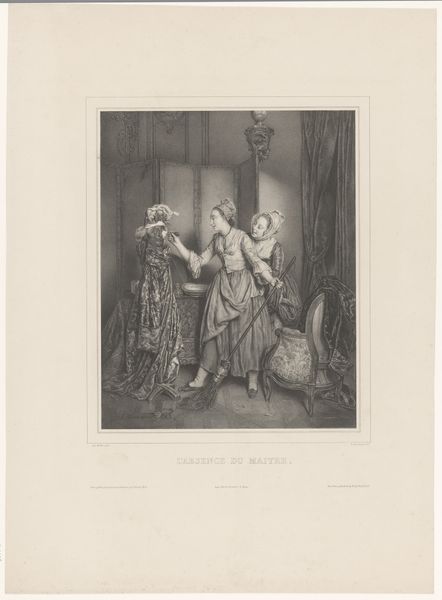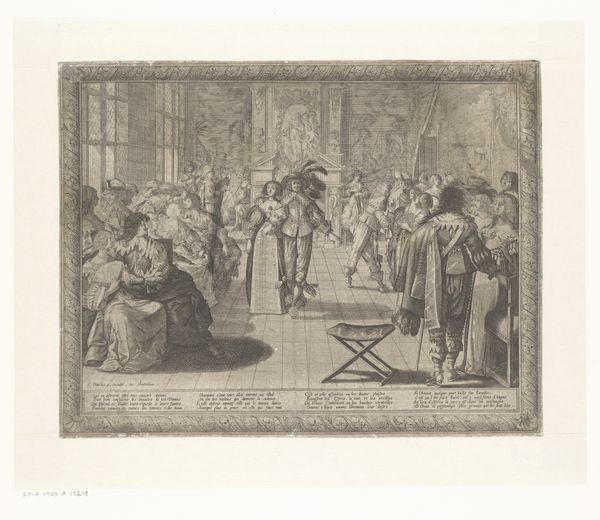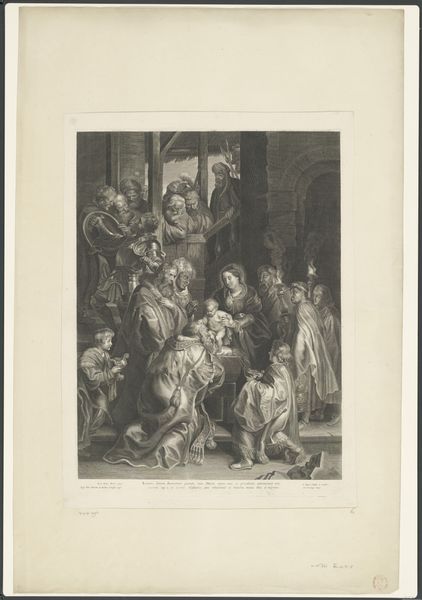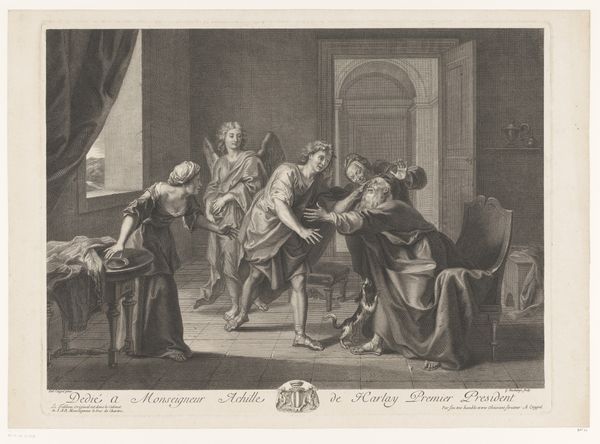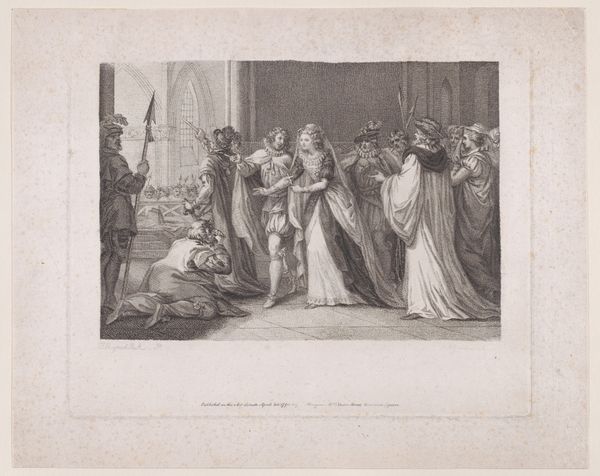
King Henry Condemning Cambridge, Scroop and Northumberland 1798
0:00
0:00
drawing, print, paper, engraving
#
drawing
# print
#
paper
#
romanticism
#
history-painting
#
engraving
Dimensions: 502 × 636 mm (plate); 596 × 888 mm (sheet)
Copyright: Public Domain
Robert Thew made this engraving, King Henry Condemning Cambridge, Scroop and Northumberland, around 1793, using a printmaking process called stipple engraving. This technique involves using a variety of etched dots to create an image, rather than lines, giving the finished print a soft, textured appearance. The stippling was achieved by using tools like etching needles, roulettes, and mattoirs to create tiny pits on the copper plate. Ink is then applied to the plate, and the surface is wiped clean, leaving ink only in the etched dots. Finally, the image is transferred to paper under high pressure, resulting in the print you see here. Think about the labor involved in creating this print: the skilled hand of the engraver, carefully placing each dot to create the illusion of tone and form. It’s a time-consuming process, demanding precision and expertise. This print, like many others of its time, was part of a larger system of artistic production and consumption, where skilled artisans played a crucial role in disseminating images and ideas to a wider audience. This work challenges our notions of artistic skill and labor, reminding us of the complex social and economic forces behind artistic creation.
Comments
No comments
Be the first to comment and join the conversation on the ultimate creative platform.
